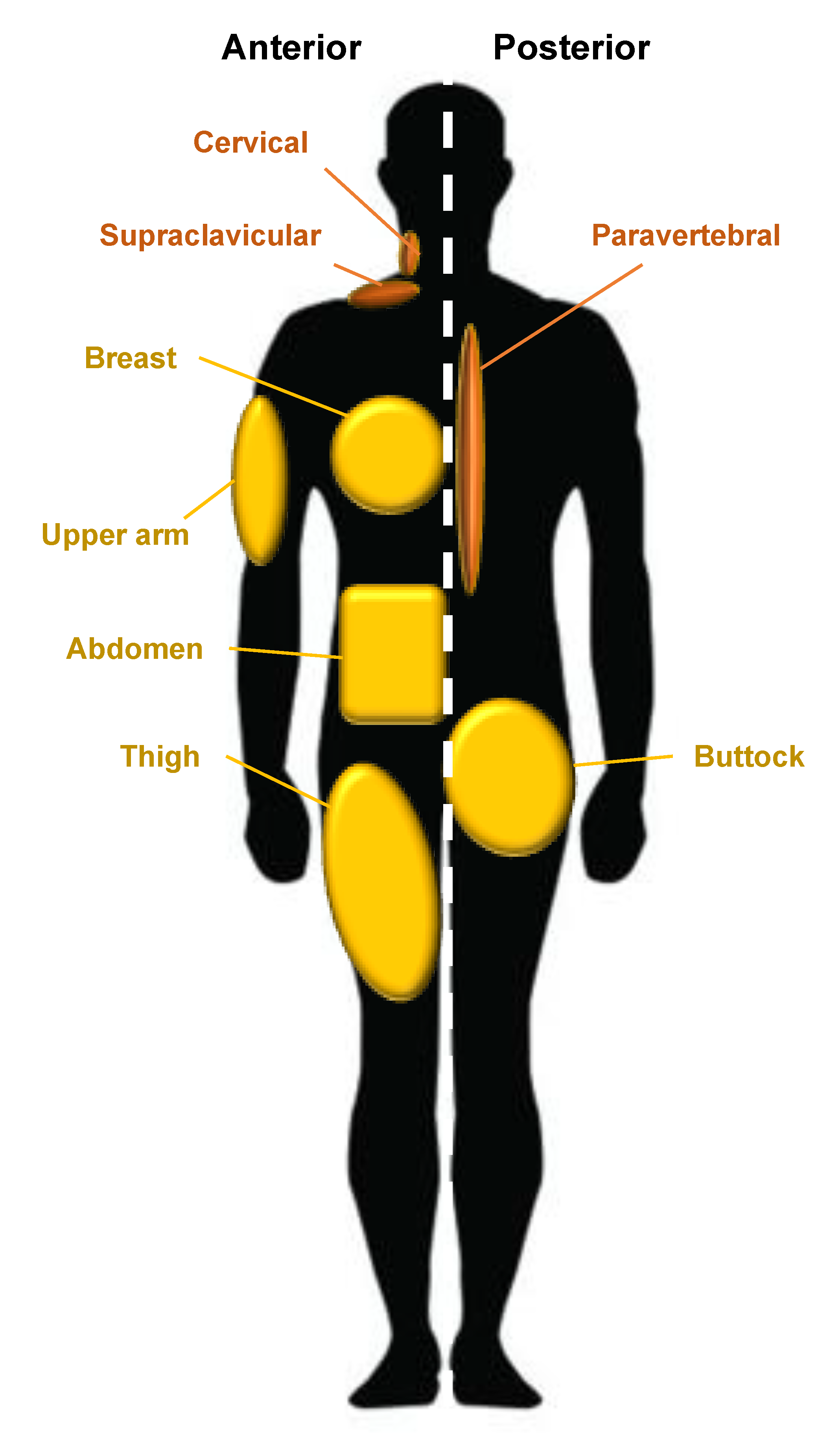Brown Adipose Connective Tissue Biology Diagrams
Brown Adipose Connective Tissue Biology Diagrams Distribution of white adipose in the human body. In humans, adipose tissue is located: beneath the skin (subcutaneous fat), around internal organs (visceral fat), in bone marrow (yellow bone marrow), intermuscular (muscular system), and in the breast (breast tissue).Adipose tissue is found in specific locations, which are referred to as adipose depots. Adipose tissue plays essential roles in maintaining lipid and glucose homeostasis. To date several types of adipose tissue have been identified, namely white, brown, and beige, that reside in various specific anatomical locations throughout the body. The cellular composition, secretome, and location … Adipose tissue is distributed within two compartments of the human body: Parietal or subcutaneous fat, which is embedded in the connective tissue under the skin ; Visceral fat, which surrounds the internal organs, such as eyeballs (periorbital fat) or kidneys (perirenal fat capsule).; Like every other tissue, adipose tissue consists of cells and extracellular matrix.

More recently, mounting evidence has been supporting the role of adipose tissue function in the development of metabolic complications independent of adipose tissue volume or distribution. Decreased capacity for adipocyte differentiation and angiogenesis along with adipocyte hypertrophy can trigger a vicious cycle of inflammation leading to Structure and Distribution of Adipose-Tissue Depots Too many people are confident that they know what fat is: an undesired body appendage that they strive to reduce over their entire lives. Like the obesity epidemic, our understanding of adipocytes and adipose tissue is expanding. Just in the past decade, substantial advances have led to new insights into the contributions of adipose tissue to normal physiology and obesity-related complications, which places adipocyte biology at the epicenter of a global pandemic of metabolic diseases. In addition to detailing the types

Adipose tissue Biology Diagrams
The distribution of adipose tissue is of great importance with regards to these co-morbidities. Insulin resistance often occurs when fat accumulates in intra-abdominal depots and is associated with a constellation of CVD risk factors, in what is known as the metabolic syndrome . Simply measuring body weight, waist circumference, or calculating Adipose tissue can be found in a number of different places throughout the body. White adipose tissue is the most abundant type of fat in humans. It's distributed within subcutaneous fat, visceral fat, and bone marrow fat.. Subcutaneous fat is found throughout the whole body, in the spaces between the skin and underlying muscles. Visceral fat is predominantly found around the organs in the Adipose tissue is a connective tissue, but it's also an interactive organ in your endocrine system. That's right, we're talking about body fat. Adipose tissue communicates through hormone signals with other organs throughout your body, as well as with your central nervous system, to regulate your metabolism.
